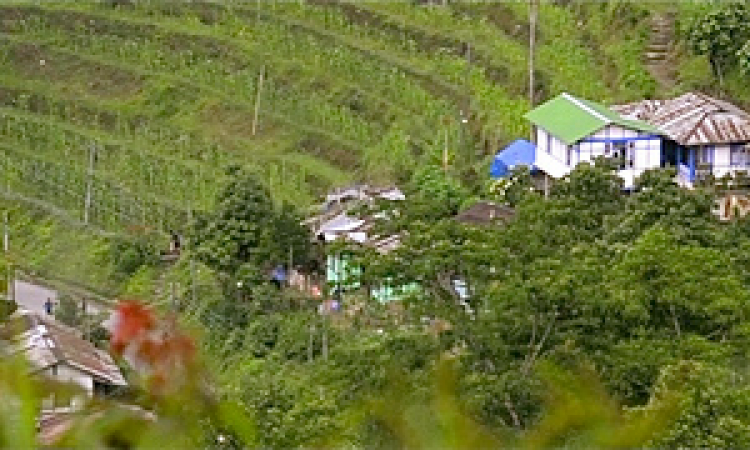
The Intergovernmental Panel on Climate Change (IPCC) report predicts large scale changes in temperature and precipitation over the Asian land mass. In the mountains, this translates to less snow, more intense but shorter episodes of rainfall and insufficient groundwater recharge, thereby resulting in the drying up of water sources.
Sikkim, a small and beautiful state rich in biodiversity, is also feeling the heat of this rapid climate change. The unprecedented changes in land use, climate and demography have had a direct impact on the rain-fed springs and streams, which are fast drying up and disappearing in these areas.
126 springs and 25 streams in 84 villages of the Sikkim Himalayas were studied. The discharge from 42% of the springs was found to have declined by more than 50% in the last 10 years. This extensive network of rain-fed micro springs and streams are usually the only source of water in these hilly villages. For the villagers situated at the crest, not only have these water sources reduced in number but also the discharge has declined. Even though the chemical properties of water are well within the permissible limits, the per capita water availability in lean periods has come down by 1/3rd, resulting in acute water scarcity.
Local sources of water mirror the rainfall pattern, and have always dried up during the lean season. What is of concern today, is the steep decline in water discharge at an alarming rate. With no access to piped water supply and greater reduced discharge, the queues at the remaining water sources get longer, with women facing the brunt of this water scarcity.
An integrated, landscape-level approach has been adopted, which includes the following initiatives:
- Preparation of a Village Spring Atlas, a database on the 700 springs of Sikkim
- Revival of dying springs through springshed development or dhara vikas
- Improving ways of tapping the runoff from hills through staggered contour trenches, artificial ponds and check dams
- Construction of water storage tanks with facility for rainwater harvesting
- Revival of dried up lakes
- Training of inhouse staff at block levels as para hydrogeologists
Future Plans
- Bridge the knowledge gap and encourage studies on springs and streams
- Utilise funds from ongoing national programs like MGNREGA for such initiatives
- Invest in lift water supply schemes to pump water to hills from lower elevations
- Encourage a bottom-up, people-driven approach to prepare Village water Security Plans (VWSP)
The solution to water scarcity due to shrinking of the monsoon season and the resultant declining discharge of natural springs and streams lies in storing water. For this the forestland needs to be managed and conserved. The key challenges, however, lie in scientific planning, a bottom-up approach and building local capacity.
This post presents a submission received for the Sustainable Mountain Development Summit-III held at Kohima, Nagaland, from September 25-27, 2013. Download the original paper below.
/articles/sikkims-springs-discharge-50-lesser-over-last-decade